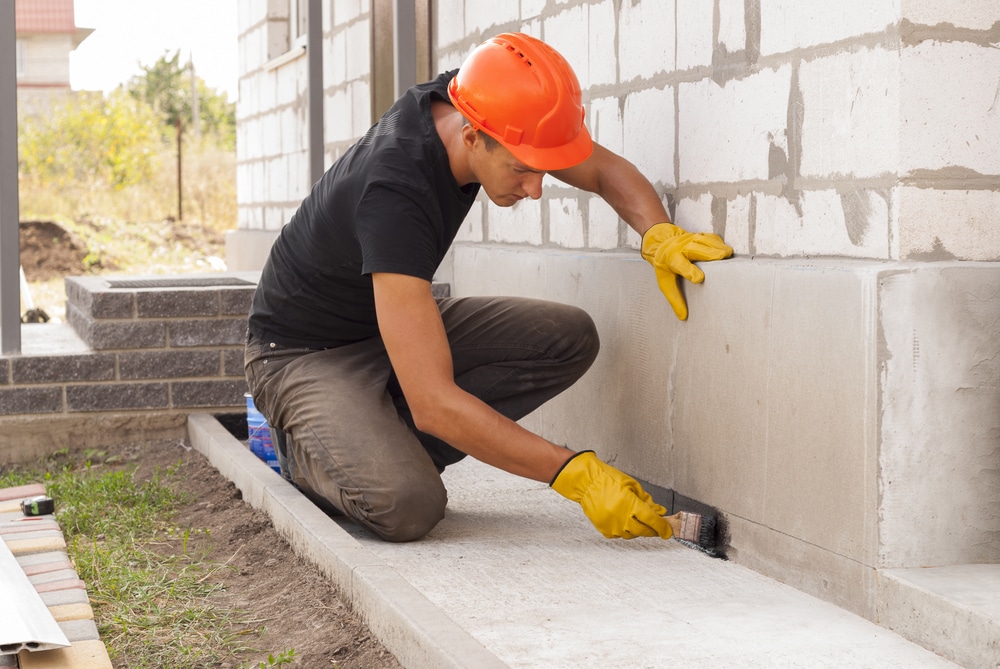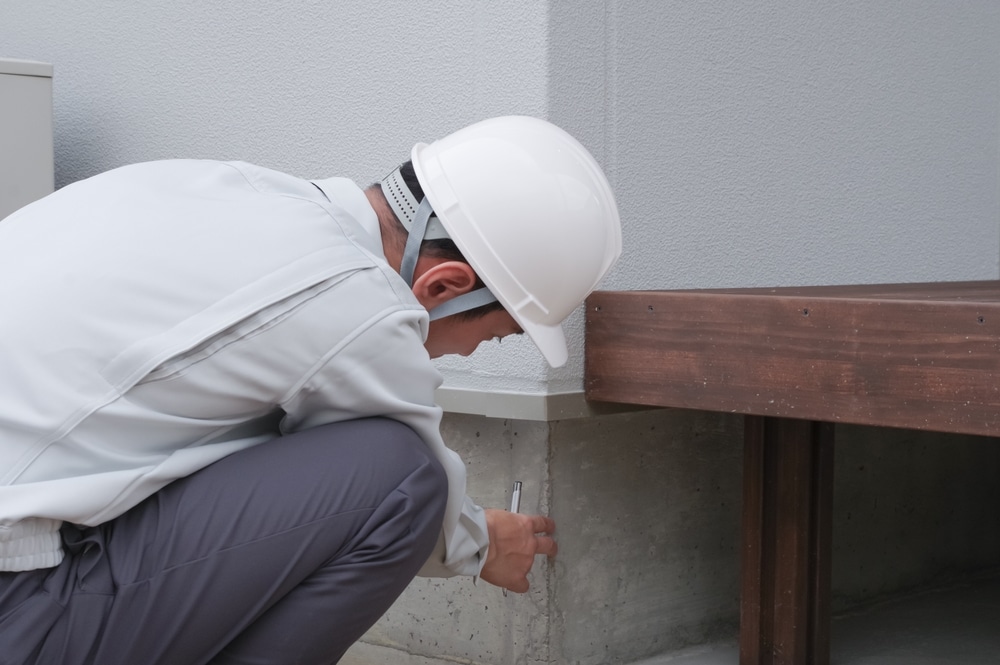September 6, 2024
Can You Live in a House During Foundation Repair?
- Residential Services
Foundation repair is a critical aspect of home maintenance that ensures the stability and safety of your house. Over time, various factors such as soil movement, weather conditions, and natural wear and tear can cause foundation problems. Addressing these issues promptly is essential to prevent further damage and maintain the structural integrity of your home.
Ignoring foundation problems can lead to significant and costly repairs down the line. Cracks in walls, uneven floors, and doors that don’t close properly are just a few signs that your foundation may need attention. By understanding the importance of foundation repair and taking proactive steps, homeowners can protect their investments and ensure a safe living environment.

Can You Live in a House During Foundation Repair?
When faced with foundation repair, many homeowners wonder, “Can you live in a house during the foundation repair process?” In many cases, homeowners can remain in their homes during foundation repair. However, the feasibility of this depends on the specific circumstances of the repair work.
Unless it is an elevation, it should be fine to stay in the house. On the other hand, extensive repairs such as elevation would require you to leave the home as it requires the disconnection of all the utilities. Elevations may also require the use of heavy machinery.
Factors That Determine Whether You Can Stay
- Extent of Repair: Generally, you can stay in your home during foundation repairs, including minor adjustments or non-invasive techniques, as well as regular excavation and underpinning. The only exception is when an elevation is required, as this necessitates the disconnection of all utilities, making it necessary to vacate the premises.
- Type of Foundation: Different types of foundations require different repair methods. Fixing a slab foundation may cause less disturbance but it depends on how you interpret disturbance. Slab requires excavation and pulling out mud from under the slab to access grab beams. The soil will be disturbed, and the premises will have a lot of workers digging if it is an entire house. Fixing a pier and beam foundation usually requires access to crawl spaces and can be more invasive. If you are getting a new foundation, there will also be digging to form and pour the new foundation. There will also be demolition of the old foundation to haul away. However, if you are just leveling a pier and beam foundation, it is not very disruptive or invasive at all.
- Safety Considerations: Safety is the paramount concern during any foundation repair project. If the repair work poses a risk of structural instability, exposure to harmful chemicals, or other hazards, it is advisable to vacate the house until the repairs are completed. Contractors will assess the situation and recommend the best course of action.
Temporary Inconveniences and Potential Hazards
During the foundation repair, staying in your house may still come with temporary inconveniences and potential hazards that you should know about:
- Noise and Dust: Foundation repair can be noisy and generate a significant amount of dust, which can be bothersome, especially for those with respiratory issues or allergies.
- Limited Access: Certain areas of your home might be off-limits during the repair process. This can disrupt daily routines, particularly if repairs are being carried out in frequently used areas.
- Vibration and Movement: Some repair techniques can cause vibrations and minor movement of the house. While generally not harmful, these vibrations can be unsettling and may cause minor cosmetic damage to the interior.
How Long Does Foundation Repair Take?
The duration of foundation repair projects can vary widely depending on the complexity and severity of the issues being addressed. On average, most foundation repair jobs can be completed within one to two weeks. Minor repairs, such as filling small cracks, might take just a few hours to a couple of days. However, more extensive repairs, like underpinning or installing new foundations, can extend the timeline to several weeks.

Factors Affecting the Timeline
- Severity of Damage: The more severe the foundation damage, the longer the repair process will take. Extensive cracking, significant settling, or widespread moisture damage require more time and effort to address properly.
- Type of Repair Method: Different foundation repair methods have varying timelines. Underpinning or pier installation methods are slower and require more work.
- Weather Conditions: Weather can significantly impact the duration of foundation repairs. Rain, extreme heat, or freezing temperatures can delay work or make certain repair methods impractical. Contractors need suitable conditions to ensure the repairs are effective and durable.
- Accessibility and Site Conditions: The ease of access to the foundation and the condition of the surrounding area also play a role. Tight spaces, landscaping obstacles, or additional site preparation can add time to the project.
Importance of a Thorough Inspection and Assessment
A thorough inspection and assessment by a qualified foundation repair contractor is crucial to accurately estimate the project timeline. During the inspection, the contractor will evaluate the extent of the damage, determine the most appropriate repair method, and identify any potential challenges that could affect the timeline. The initial evaluation ensures that the repair plan includes all necessary items. It also provides homeowners with a clear understanding of the project’s timeline.
What is the Foundation Repair Process?
Understanding the foundation repair process can help you prepare for what to expect and make informed decisions. Here’s a detailed breakdown of the typical steps involved in a foundation repair project:
Initial Inspection and Assessment
- Initial Consultation: The process begins with an initial consultation where a professional foundation repair contractor visits the property to discuss the homeowner’s concerns and gather preliminary information.
- Thorough Inspection: The contractor conducts a comprehensive inspection of the foundation, both inside and outside the home. This includes checking for visible signs of damage such as cracks, uneven floors, or doors and windows that don’t close properly. The contractor may also use specialized equipment to detect hidden issues.
- Assessment and Diagnosis: Based on the inspection findings, the contractor diagnoses the root cause of the foundation problems. This assessment helps in determining the most appropriate foundation repair method and developing a detailed repair plan.
Types of Foundation Repair Methods
- Underpinning: Underpinning involves strengthening the foundation by extending it to a more stable soil layer. This is typically done using concrete, which are driven deep into the ground to provide additional support. Underpinning is suitable for homes experiencing significant settling or sinking.
- Helical Piers: Helical piers are screwed into the ground to support and stabilize the foundation. They are particularly effective in areas with unstable soil conditions and can be installed quickly with minimal disturbance to the property.
Post-Repair Inspection and Follow-Up
- Quality Check: Once the repair work is completed, the contractor conducts a thorough quality check to ensure that all issues have been addressed and the foundation is stable.
- Final Inspection: A final inspection is performed to verify the effectiveness of the repairs and ensure that the home is safe and secure. The contractor will also check for any cosmetic damage caused during the repair process and make necessary corrections.
- Follow-Up and Maintenance Tips: The contractor provides the homeowner with follow-up instructions and maintenance tips to prevent future foundation problems. This may include recommendations for proper drainage, landscaping, and regular inspections.
- Warranty and Support: Reputable foundation repair companies often offer warranties on their piling installation, providing homeowners with peace of mind and assurance of long-term stability. The contractor will also be available for any questions or concerns that may arise after the repair.
The foundation repair process involves a series of well-coordinated steps, from initial inspection and assessment to the actual repair and post-repair follow-up. By understanding this process, you can be better prepared and ensure your foundation repair is handled professionally and effectively.
Common Signs of a Foundation Problem
Recognizing the early signs of foundation problems can save homeowners from extensive and costly repairs down the line. Common indicators include:
- Cracks in Walls: Small hairline cracks might be normal, but larger cracks, especially those wider than a quarter-inch, can signify foundation issues. Pay close attention to cracks around doors and windows.
- Uneven Floors: Floors that appear to slope, sag, or have noticeable bumps are often a sign of foundation settling or shifting.
- Sticking Doors and Windows: If doors and windows suddenly become difficult to open or close, it could indicate that the foundation has shifted.
- Gaps Around Windows and Doors: Gaps appearing around frames can be a sign of foundation movement.
- Separation of Walls from the House: Any separation between walls, ceilings, and floors, or exterior walls from the house, indicates potential foundation issues.
Importance of Early Detection and Timely Repair
Early detection of foundation problems is crucial to prevent further structural damage. Addressing issues promptly can avoid more extensive repairs and maintain the home’s value and safety. Timely intervention can also reduce the risk of related problems, such as water intrusion or mold growth.
Visual and Structural Indicators
In addition to the visible signs, homeowners should also be aware of structural indicators. These include:
- Bowing or Leaning Walls: Walls that bow or lean inward can be a sign of significant foundation issues.
- Chimney Cracks: Cracks in the chimney or it pulling away from the house can indicate foundation movement.
- Basement Water Leaks: Persistent water leaks in the basement might be due to foundation cracks allowing water to seep through.
How Much Does Foundation Repair Cost?
The cost of foundation repair can vary widely depending on the severity of the damage and the chosen repair method. On average, homeowners can expect to spend between $2,000 and $7,000 on foundation repairs. Minor repairs will cost as little as $2,000, while major structural repairs can exceed $10,000.
Factors Influencing the Cost
Several factors influence the cost of foundation repair:
- Extent of Damage: More severe damage requires more extensive and costly repairs.
- Repair Method: Different methods have varying costs.
- Accessibility: Hard-to-reach areas may increase labor costs.
- Soil Conditions: Poor soil conditions might require additional stabilization measures, raising costs.
Preventative Measures to Avoid Foundation Issues
Preventing foundation problems involves taking proactive steps to maintain the stability of your home’s foundation. Key preventative measures include:
- Proper Drainage: Ensure that water drains away from the foundation. Install gutters and downspouts to direct water away from the house.
- Soil Moisture Control: Maintain consistent moisture levels around the foundation to prevent soil from expanding and contracting excessively.
- Tree and Shrub Placement: Plant trees and shrubs away from the foundation to avoid root interference and excessive water absorption.
Regular Maintenance Tips
Regular maintenance is crucial in preventing foundation problems:
- Inspect for Cracks: Regularly check for new cracks in walls, floors, and ceilings.
- Monitor Doors and Windows: Keep an eye on the alignment and operation of doors and windows.
- Maintain Plumbing: Repair any plumbing leaks promptly to prevent water from undermining the foundation.
Importance of Proper Drainage and Landscaping
Proper drainage and thoughtful landscaping play a significant role in foundation health. Grading the soil away from the house and avoiding excessive watering near the foundation can help prevent issues. Installing a drainage system can also protect the foundation from water damage.
Call Today for Foundation Repair
If you suspect foundation issues or need a professional inspection, contact Abry Brothers, Inc. Our experienced team offers reliable foundation repair services to ensure your home remains safe and secure. Schedule a consultation today to protect your investment and maintain your home’s structural integrity.
Share this blog:








